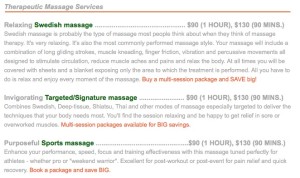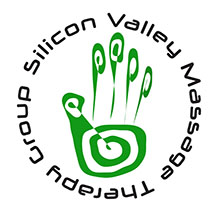 Massage is gaining popularity fast. More people than ever are making appointments and more are talking about the positive benefits. It is no longer a surprise to see a massage station at an airport or gym or to talk to people who incorporate massage into their monthly wellness routine. With the increase in access to massage, however, many business owners see a need to differentiate the customer experience by offering “unique massage experiences” to grab customer eyeballs and increase sales.
Massage is gaining popularity fast. More people than ever are making appointments and more are talking about the positive benefits. It is no longer a surprise to see a massage station at an airport or gym or to talk to people who incorporate massage into their monthly wellness routine. With the increase in access to massage, however, many business owners see a need to differentiate the customer experience by offering “unique massage experiences” to grab customer eyeballs and increase sales.
Enter the massage menu
Just about any massage establishment features a menu of services featuring your choice of Swedish, deep tissue, hot/warm stone, Shiatsu or other modalities. The challenge is that the average consumer a) is unfamiliar with the differences, and/or b) is unfamiliar with which service to choose for the particular massage goal they are seeking. That means people are choosing right sometimes, and wrong sometimes. The result could be an ineffective, unfulfilling massage session. Luckily, the fix has an easy two-part answer: better client education and trained reception staff.
What to do to get the right kind of massage for you?
Our massage clinic has seen thousands of clients in our nearly five years in business. While we have a menu of services, about 60% of our clients came to us with a specific goal such as relaxation, pain relief, increased flexibility and mobility, or pre- or post-event sports massage. Our guest services team adeptly steers clients toward the therapist that can best meet their needs and we charge the service accordingly.
The remaining 40% came in with a less clear idea of what they want. They got the massage as a gift, or they wanted to treat themselves to some “me time” but don’t know exactly what that looks like, or perhaps they are getting their first massage. With each of these scenarios, the pre-massage conversation skills of the reception desk and therapist really come into play. For most who aren’t used to identifying a goal, the answer is a personalized, multi-modality service performed by a qualified massage therapist who has created a plan for the service based on discussion with the client and information on the client intake form.
To help make our clients more comfortable about the process of selecting a massage, we we introduced the “Signature” massage. This therapeutic massage is essentially a “massage therapists’s choice”. That means the therapist uses their knowledge and experience to custom design a session using whatever massage techniques they believe will most help the client achieve their goals. Our expert therapists are completely free to use any tool or technique at their disposal. They educate the client as they work and identify massage modalities and techniques most effective for the session. And the clients are completely pleased with the results. Our rebooking rates for these “signature” massages are sky high.

